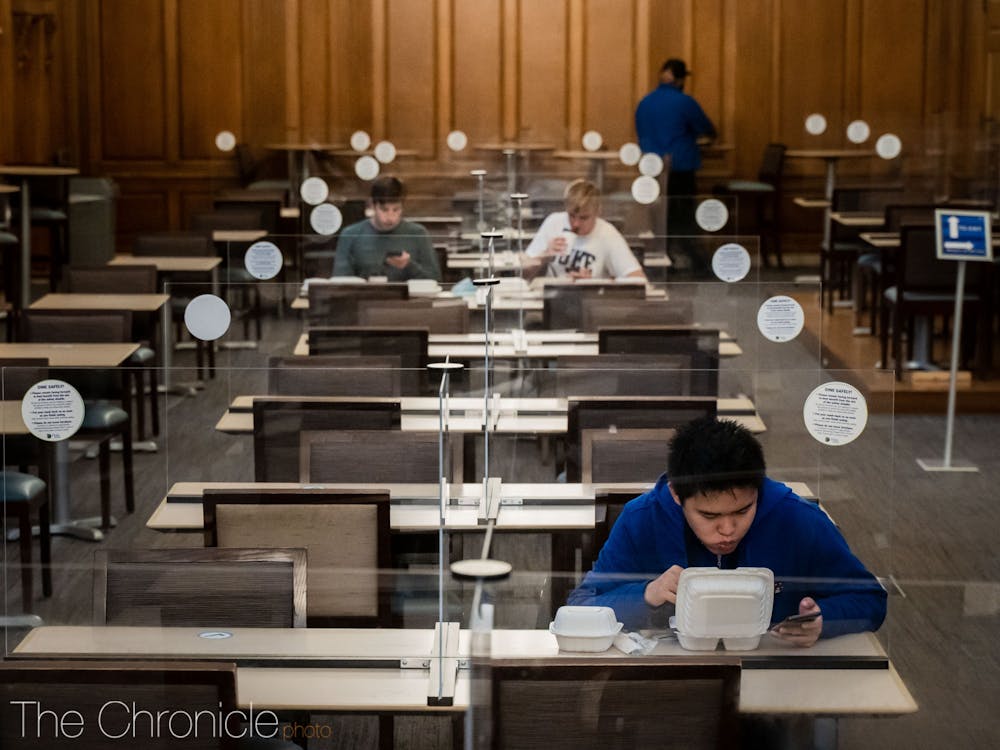Marketplace’s tables have gained a memorable new addition designed to prevent the spread of COVID-19, but not all students are on board.
In order to make indoor dining safer, Duke Dining has installed plexiglass dividers between seating places. Students are divided on subject of the barriers, with some questioning their presence and whether they stop all the ways the coronavirus can spread.
Executive Director of Dining Robert Coffey wrote in an email that Dining added indoor seating after requests for “more indoor seating at East Union due to the fall weather and pending time change.”
The Centers for Disease Control and Prevention recommends plexiglass dividers in “restaurants where maintaining physical distancing might be difficult,” Coffey noted.
Some students appreciate Duke Dining’s decision to install the dividers. First-year Madeleine Jones said that the ability to sit inside Marketplace has preserved a sense of normalcy.
“I think they were a good decision to let us interact with each other more and have a freshman dining experience closer to normal,” Jones said. She explained that interacting with other students in Marketplace has allowed her to get to know her classmates and solidify friendships.
But other students say that the plastic barriers, which were designed to allow people to eat closer to each other, have made them more likely to avoid Marketplace. Instead, they bring food back to their rooms.
First-year Robert Miron said that the plexiglass barriers are one reason that he never eats at Marketplace.
“They [the dividers] just look weird,” Miron said.
First-year Zoe Tishaev voiced doubts regarding the effectiveness of the plexiglass walls for preventing the spread of the coronavirus
“I think the plexiglass dividers in Marketplace are sort of bizarre,” Tishaev said. “While they do a great job of restricting COVID transmission and sound between people sitting across from each other, they do virtually nothing for people sitting next to each other. The plexiglass cuts off at the table—I can look to my right and speak to a friend, three feet apart, barrier-free.”

Two students eat a meal at Marketplace, separated by new plexiglass dividers.
Tishaev suggested that Duke Dining addresses this by installing “longer barriers that create more of a cubicle style enclosure.”
Miron worried that aerosols, tiny airborne particles that growing evidence suggests can spread the virus, could simply go around the barriers. He speculated that eating six feet apart outside may be safer than sitting indoors at all.
Although experts have recommend the use of plexiglass dividers to protect from the transferral of respiratory droplets, their effectiveness in preventing the coronavirus spread has yet to be proven.
Coffey wrote that the barriers are used “nationwide in both food service and retail to help reduce the spread of COVID-19.”
Just like the other safety measures implemented by Duke and Duke Dining, the plexiglass dividers are designed to “encourage behaviors that help mitigate risks associated with the spread of COVID-19 among customers and team members,” he wrote.
Get The Chronicle straight to your inbox
Sign up for our weekly newsletter. Cancel at any time.

